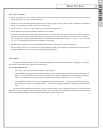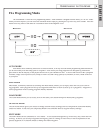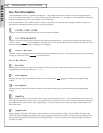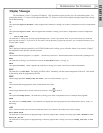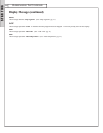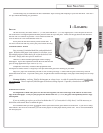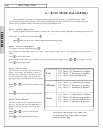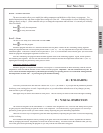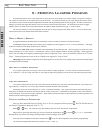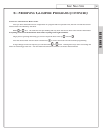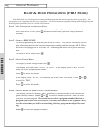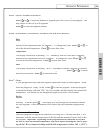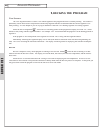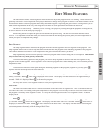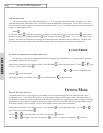
15
B E G I N N E R
BASIC FIRING STEPS
STEP 4 - VERIFY SETTINGS
The next two entries allow you to modify the ending temperature and hold time of the factory-set programs. For
detailed instruction on how and when to adjust these settings see Glass 101. If the controller is not set in Modify Glass Fire
Mode go directly to Step 5. (If the controller asks you to change the temperature and hold time it is currently set in Modify
Glass Fire Mode)
Press
to verify the temperature.
Press
to verify the hold time.
STEP 5 - START
The kiln is now ready to be started and will fl ash
rEDI.
Press
to start the program.
When the program advances or is advanced from the Process phase it enters the Pre- Annealing cooling segment.
During this segment the kiln will cool quickly down to 960 °F (516 °C) . It is very important not to open the lid after it has
entered this phase. If the kiln is forced to cool beyond 960 °F (516 °C) it can introduce stress into the glass. (For more infor-
mation on programs and program segments see Glass 101).
After Pre-Annealing the program enters the fi nal segment which is the Annealing segment. Again, do not open the
kiln lid during this segment. The kiln will shut off and cool at a natural rate after the temperature reaches 800 °F (427 °C).
Opening the lid during this period may cause pieces to crack.
When The Firing is Complete
When The Firing is Complete
When the program is complete the controller will beep for 15 seconds and fl ash “
CPLt
” alternately with the current
temperature of the kiln and the amount of time it took to fi re the program.
Important - The kiln could still be very h
ot. Be
sure to
chec
k the internal temperature of the kiln
b
efore touching it or opening the lid. We recommend waiting until the
kiln temperature is below 100
˚
F. to prevent glass from thermal shocking.
˚F. to prevent glass from thermal shocking.˚
4 - UNLOADING
To be safe you should wait until the kiln is below 100 °F (38 °C) to unload it. If you open the lid prematurely thermal
shock may occur causing pieces to crack. Inspect the pieces as you unload them and make note of any changes you may
want to make to your next program.
Shelf paper may be stuck to the bottom of some pieces. This can usually be removed with water and light scrubbing.
5 - VISUAL INSPECTION
The GlassFire Programs in the GlassMaster LT Controller were designed to Fuse, Tack Fuse and Slump basic System
96 glass projects without having to open the lid for visual inspection. Given the diversity of glass projects it is not always
possible to get the specifi c results you want without visually inspecting the glass and making adjustments.
There are two basic ways to inspect the glass and make adjustments, inspecting the glass after it is fi red and inspecting
it while it is fi ring.
We recommend that beginners start by looking at the glass after it has fi red and has cooled. Adjustments can then be
made by changing the Process Temperature or Hold Time on the next fi ring. The draw back to this method is that you may
lose a little glass before perfecting the program so you may want to start with some scrap glass.



